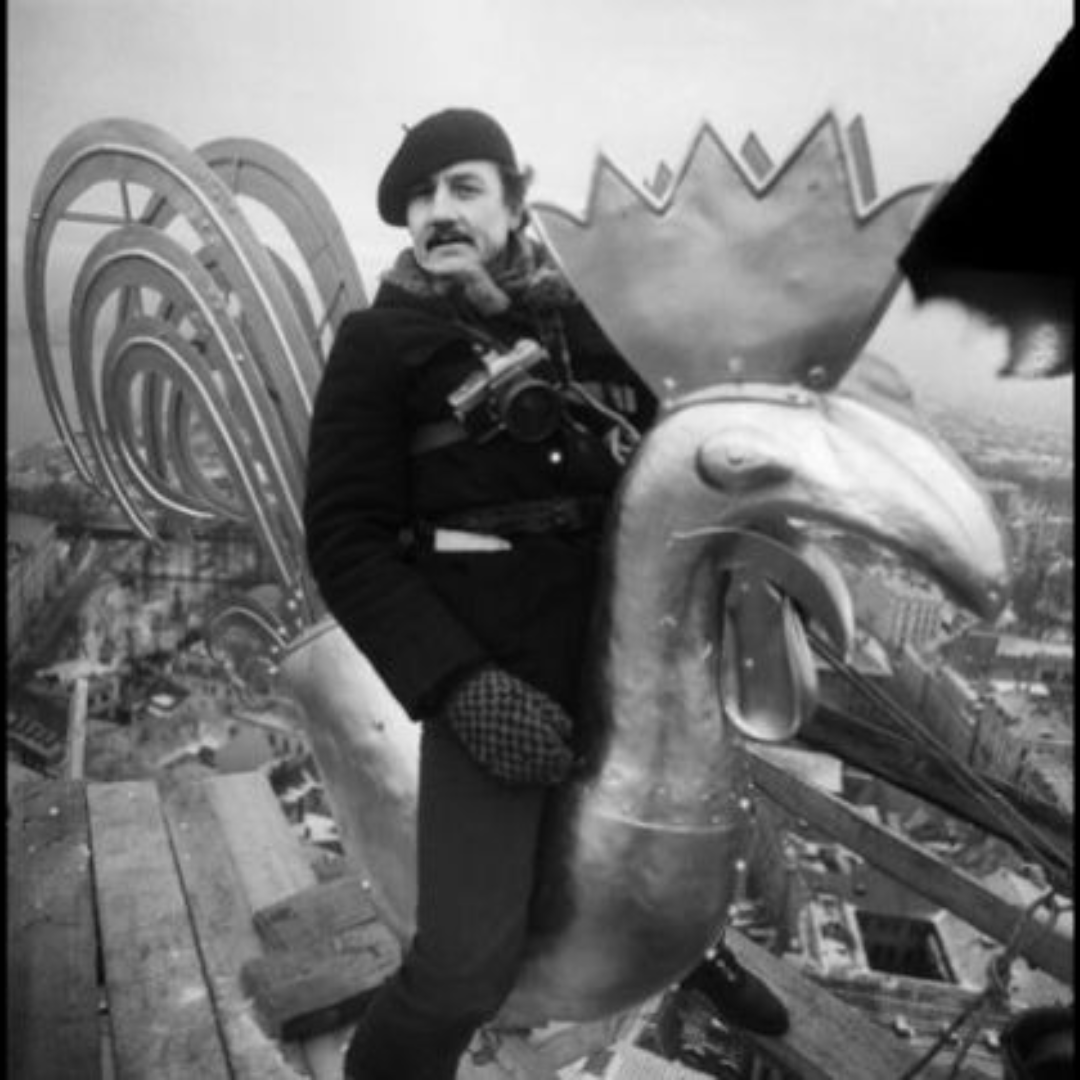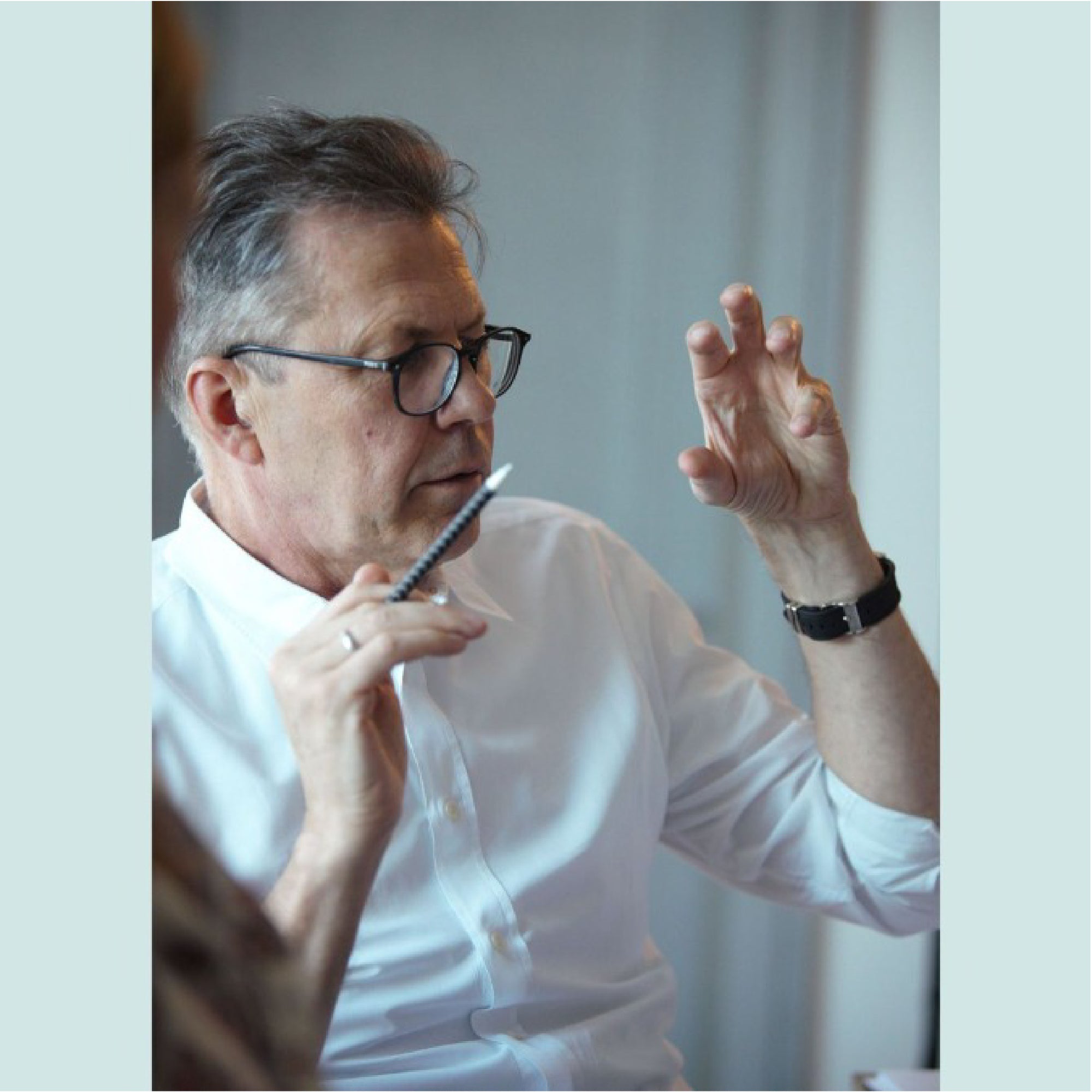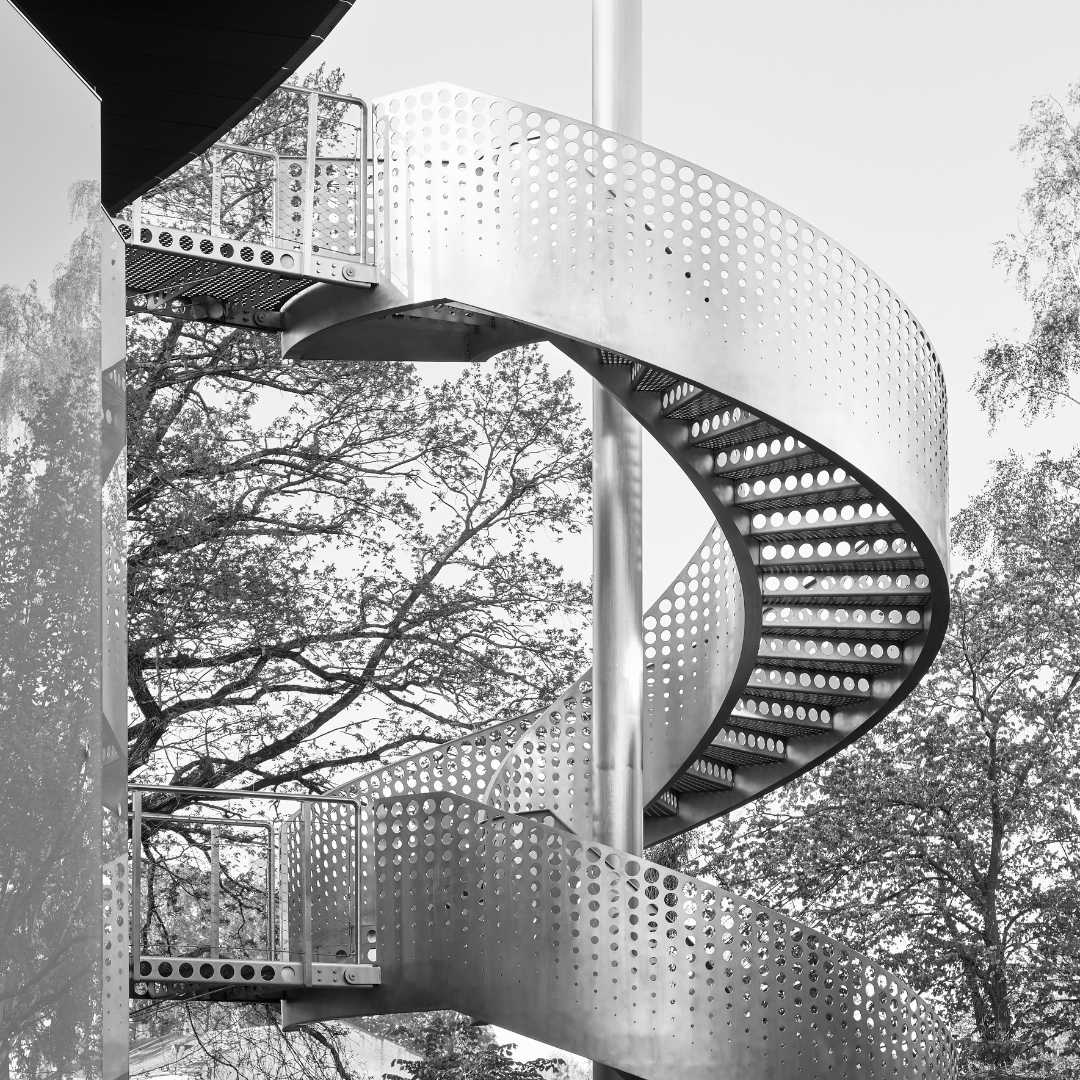Exhibition of photographs by Uldis Briedis in the cultural space "Ola Foundation"
On March 29, the exhibition of photographs by the well-known photographer Uldis Briedis "Free to be. Uldis Briedis. Portraits (1966-2010)." It displays more than 60 portraits of cultural personalities of Latvia, made in the period from 1966 to 2010, and is essentially a photographic record of the signs, events and spirit of its time. They have a documentary and at the same time timeless character. The faces of those characters, captured in the most diverse moments of life, allow the viewer to encounter the essence of creativity - the feeling of inner freedom, which, despite the external framework of time, is in continuous connection with the source and truth.
Many of the people in these portraits no longer exist. But their imprint, emotions and strength of spirit live on in the photographs. As the legendary photographer Alfred Stieglitz once said: "There is such a subtle reality in photography that it becomes more real than reality."
For Uldis Briedis, the main thing in photography is truth. A thought revealed through a gesture, a look in the eyes, a strand of hair, a light, a smile, a syllable frozen in half a word, a tear. He himself says about the period of time in which his characters live - contemporaries and friends - "it was like a starting shot for people's freedom." For the unlimited, absolute, in which all possibilities are present. Such a moment of culmination of freedom is possible only in moments when both conditions coincide - inner freedom is in synchronicity and synergy with outer freedom.
When asked what interests him in the portrait, Uldis Briedis answers: "That's what interests me, what a person really thinks. I have always approached people with an open heart and people have trusted me. And then they have also told about what they think. It's always been important to me to get the person as they are. Because you just put him against the wall "as if to be shot", let him stand there now, there is nothing there anymore. There is no truth.
I try to take pictures in natural light. It is, of course, more difficult, but it is respect for the person. And also against the truth. Basically, I have a shot in my head all the time. You can't really tell me by looking whether I'm thinking something or not. It may also look like I'm bored. But my head is working all the time. I recorded that I was taking a picture, and at that moment I immediately felt whether the shot was taken or not. Suddenly I look, there is a different turn. I feel like I've done everything, but at the same time I'm screaming, maybe something more interesting will appear. I am at work all the time, including the moments when I am standing still and not taking pictures. It is a load that a person knows nothing about. I was constantly thinking intensely. Basically, I'm never completely satisfied. Because I know it can be better. And in pursuit of it, there is always a load in the head."
Each of Uldis Briedis portraits has its own story, during the creation of the exhibition I had the opportunity to meet Ulda and write down some of them.

Ēriks Hānbergs
"When I went to photograph Eric Hanberg, I noticed the classic "pot" in the editorial office. Hanberg already had the impression that the "cauldron" would suit him. I said to put it on. He didn't even pose. He was standing smoking a cigarette, and that's what I pictured him to be. Genuine.”

Uldis Stabulnieks
“Uldis Stabulnieks was a man of the heart. One of my closest friends. We have spent a lot of time together. They went fishing, went to the countryside. This photo was taken in Riga, in a snowfall. We walked long distances then. We were both snowed in."
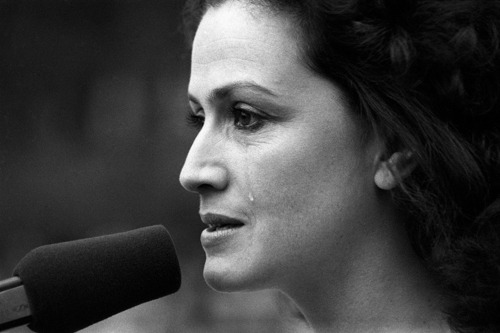
Katrīne Pasternaka
“There are moments when everything comes together and it's the best thing that can happen. This is one of those, and one of my favorite photos. The classic, beautiful profile of Katrīne Pasternaka and a tear, and nothing superfluous. The background is dark, everything important is said in the face. I still cry when I look at this picture. It was a very emotional moment at the Freedom Monument, the 100th anniversary event of the sculptor Kārlis Zāle. Catherine gave a speech.
There is no room for words. That moment has to be experienced. That tear is still there.”

Raimonds Pauls
"Raimonds Pauls is a long-time friend of mine. We have been together in all kinds of fun. When he was in Liepāja, he always came to "Vāgūzi", my famous lodging. We haven't made such jokes."
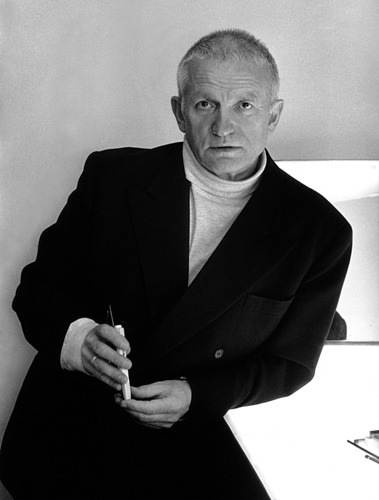
Andris Freibergs
“We talked, it was in the stairwell of the theater lobby. Andris stood in such a natural position, leaning on his elbow. I watched him quietly, following his facial expressions. I didn't sell him, I just let him be. He had written something before and had not put down his pen. Still twirling it by hand. I took advantage of the situation, he spontaneously stood back, chose the pose himself, and I just - click and ready."

Leons Briedis
“My last name is brother. I look at that picture so self-critically, the Deer is not visible enough. I use a lot of backlighting, also in this case. That's why you don't see the whole face, only part of it. It's always about how I see the particular person at that moment, what the note is. Since Briedis is a poet, I felt that the portrait should be neutral. Let there be nothing superfluous. If you need to show a poet, which is basically information and poems, you don't need to overdo it and don't know what kind of grimace to lure out. There is a shadow, the shape of the face, the light falls on the hair. I'm already looking while taking a picture - oh, you can see how that strand of hair stands out in the light. It is not on the dull, it is seen in the moment of photography."

Martiņš Brauns
"Mārtiņš Brauns had very expressive eyes. Big, deep. Talkative. I wanted to capture them in a narrative moment. Like a poem that is but not written. This photo was taken at his home. We were just talking and I kind of clicked."
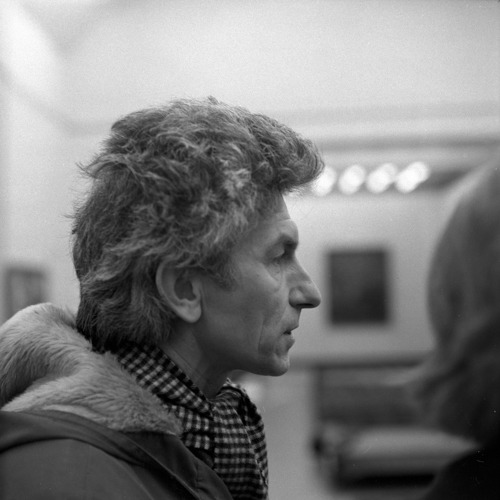
Imants Ziedonis
"I have photographed Imants Ziedonis a lot. Even when he hasn't seen me. Ziedonis had such a wide, cool step. I have a picture of the time we both walked along the seashore. The sea was very gentle at that time. The flower just went. In profile, full length. The caption for that photo is: "Oh, you my Kurzemite."
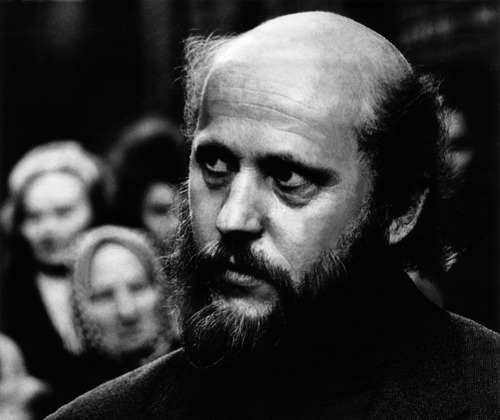
Knuts Skujenieks
"It was on 'Art Days.' Poetry lovers and members who listen to poetry. Skuenieks had such a cool, observing look. The light comes as if from a halo, and a strand of hair - an accent that he is not frizzy. Not internally either, in your head."
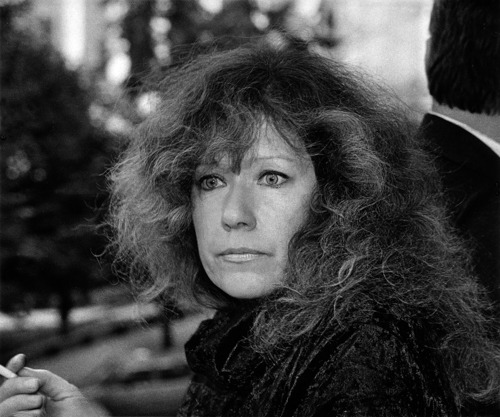
Līga Purmale
“Here she is in a completely natural environment, with a cigarette in her hands. Take a smoke with your chest full and think. My principle of photography is that I do not disturb the person. It's not easy, sometimes it can take an hour or two to get the right shot."
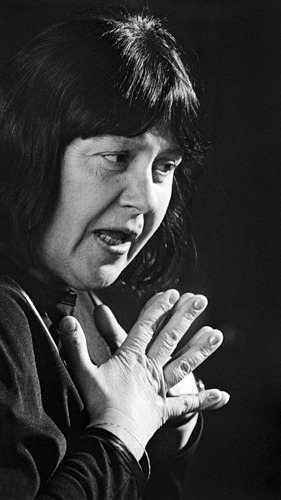
Regīna Ezera
"This photo was taken during the Congress of the Writers' Union, where Regīna Ezera gave a speech. She was gesticulating a lot and I was watching to make her hands as expressive as possible. I really liked him as a person. She was so grounded, merged with her land."
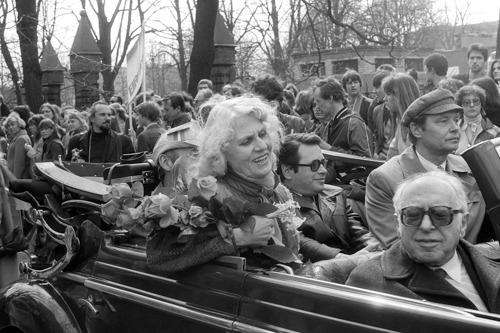
Džemma Skulme
"It was photographed during Art Days. Here she is like a functionary. Džemma was one of the organizers of Art Days. Drove in the parade with an open car."
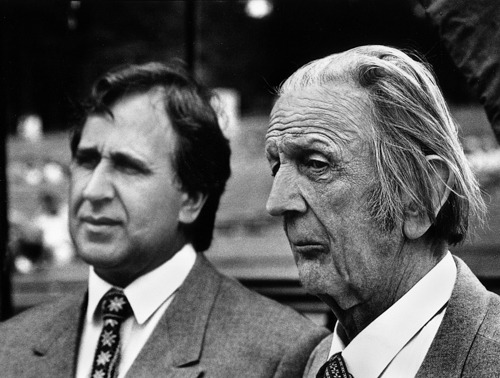
Jānis Erenštreits un Leonīds Vīgners
"It was at the Song Festival. Ehrenstreit Jānits was my classmate. We sat on the same bench at Mazirbe school. I still remember it with a smile. I liked music and I sang well in the choir, all this was very close to my heart and both Jānis and I talked about learning music. But there was one interesting difference. I was a peasant boy, and in Mazirbe everyone was mostly from fishing villages. During the Soviet era, there was such injustice that the peasants were driven into deep poverty. They had to work for pitiful pennies while the fishermen went out to sea and simply scraped it. Made huge money.
I still remember the first day of school. Everyone from the fishing villages, including Ehrenstreit, came to school in new suits. I had some kind of old windbreaker, not even really a shirt to wear. There was total poverty then. Basically, the peasant was inferior to the slave. When it was necessary to go to study, it was necessary to get permission with great effort to allow the child to do so. Such a terrible system could only be invented in Soviet times.
I am glad that I was not jealous - Jānis was my best friend, we sat in the same pew, played the piano in our spare moments and dreamed of a music school. It remained just a dream for me."


Oļģerts Kroders
"It is near the Liepaja theater. We both talked and I took pictures at the same time. He was a very pleasant man, from all points of view. Got the jokes. That to me is one of the most important good character traits, if a person understands jokes."
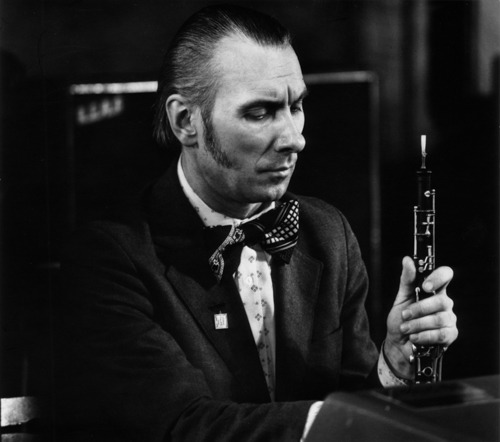
Jānis Blūms
“It is during the rehearsal, Jānis Blums is strumming his instrument together and you can see that he is about to let go. It's a moment before. His facial expression is also tense, he will think about the most important thing right away. Not for me, but for my instrument. See how carefully he looks, will put the tag correctly or not. A person is immersed, he does not see the photographer at all."
Text - Una Meister
Originally published Artteritory.com
Photo - Uldis Briedis

